Chickens are a type of bird that was first domesticated more than 10,000 years ago. Today, chickens are a common sight around the world as they are frequently bred for eggs and meat. Chickens are the most populous birds on the planet, with billions of them raised in captivity and living in the wild.
These fowl are easily identified by their comb and wattle, somewhat diminutive size, and unique strut. Interestingly, as domesticated animals, their lifespan can vary quite a bit, so we’re going to take a look at the oldest chicken that has ever lived and see how they measure up against other birds.
Types of Chickens and Their Habitats
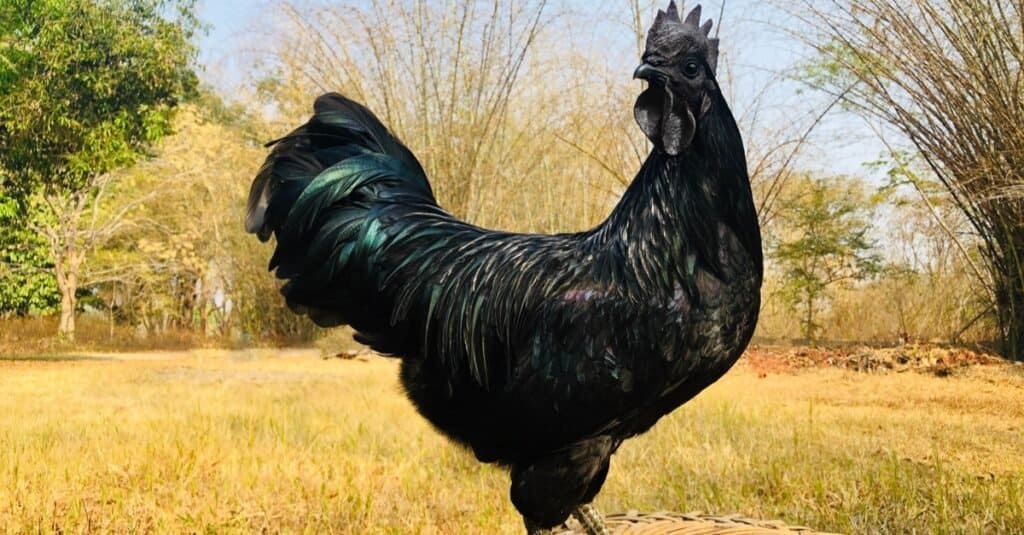
The Ayam Cemani chicken is highly sought after because of its unusual glossy feathers that are entirely black in color.
©Bass001/Shutterstock.com
Chickens belong to the Gallus gallus domesticus species, a subspecies of the red junglefowl that originated in Asia. With the help of humans, chickens have greatly expanded their living range to several countries in both hemispheres. The largest population lives in China, with the United States and the U.K. having sizable populations as well.
Hundreds of chicken breeds have been identified so far, with each one having distinct traits including plumage, skin color, egg color, place of origin, and other factors. For example, the silkie chicken is a Chinese breed known for having unique fluffy plumage, black meat, and for being an exceptional brooder. Some breeds are smaller while the Jersey Giant chicken reaches up to 13 pounds, making it the largest chicken in the world.
The vast majority of chickens today are raised in various farm settings. Smaller farms’ habitats will typically have open pens for chickens to roam throughout the day and chicken coops for the birds to rest in at night. Chickens that lay eggs typically roost inside of the coop rather than in the open to avoid predators.
As demand for chickens has risen, the birds are often kept in larger factory farm settings where they might be free-range (similar to the aforementioned farm settings), or they may be kept in a large, crowded building all the time. With several billion chickens alive today, factory farms are the most common living situation.
Typical Chicken Lifespan
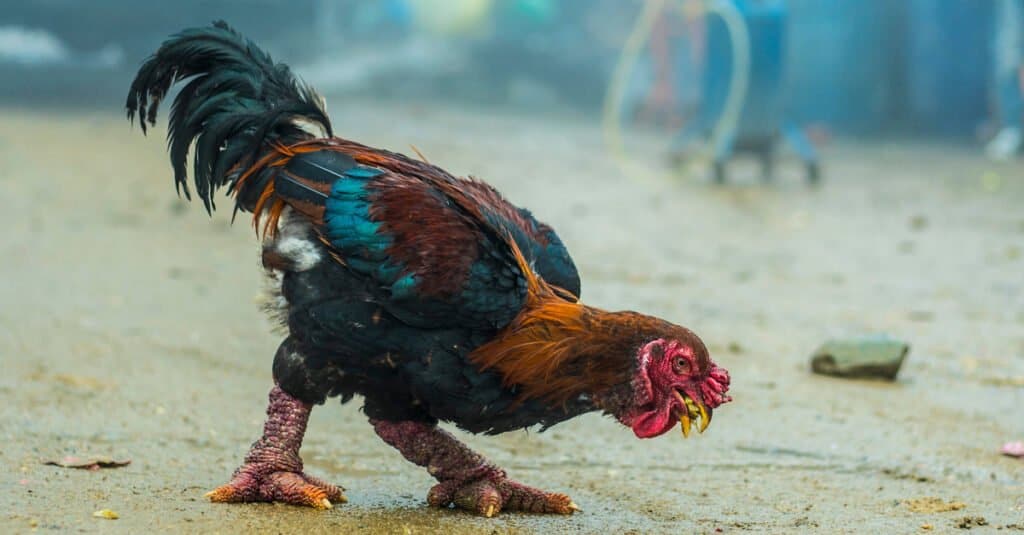
A dong tao chicken in an Asian market
©Hoang Quoc Phuong/Shutterstock.com
The typical chicken lifespan is greatly affected by the farming methods that humans have imposed upon the birds. Chickens that survive any initial culling and are raised for their meat and eggs tend to survive between 2 to 4 years. Many birds are slaughtered closer to the 2-year mark than the 4-year mark, though.
However, chickens living in the wild can live upwards of 7 years. This requires decent living conditions and safety from predators as chickens are lackluster at flying. Chickens can survive for a significant time if they are properly cared for by their owners or with optimal living conditions.
The World’s Oldest Chicken
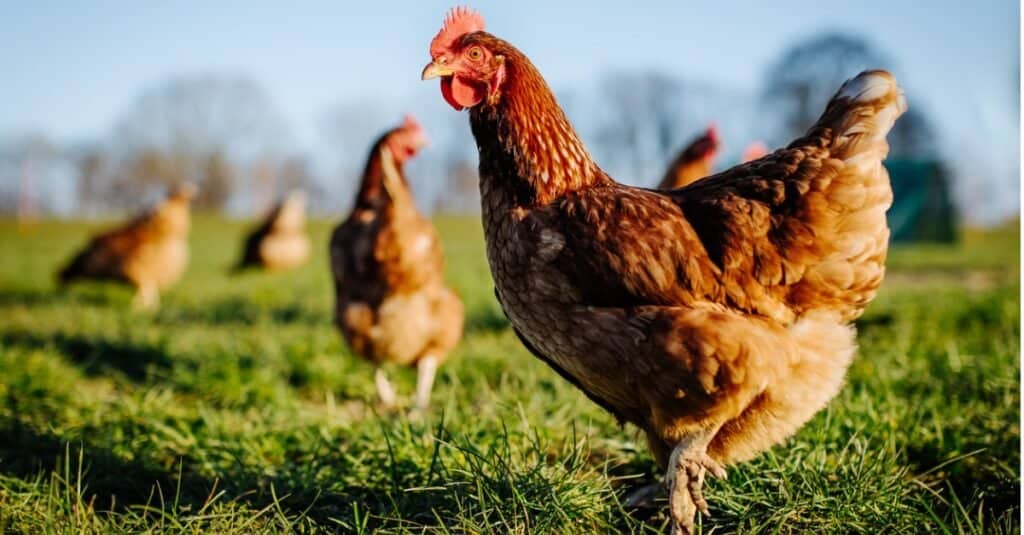
Buffy was a red quill chicken that lived to 22 years old!
©iStock.com/Sonja Filitz
The world’s oldest chicken that ever lived was named Muffy, a bird that lived to the ripe age of 22 and died in 2011. This is an extreme case where the owner provided the chicken with great treatment that allowed for it to thrive for almost three times the average lifespan of a chicken.
Muffy lived an easy life that did not include laying many eggs, a fact that seems to be present in many of the oldest chickens to have been identified and certified by record-keeping agencies.
Other Chickens That Reached a Great Age
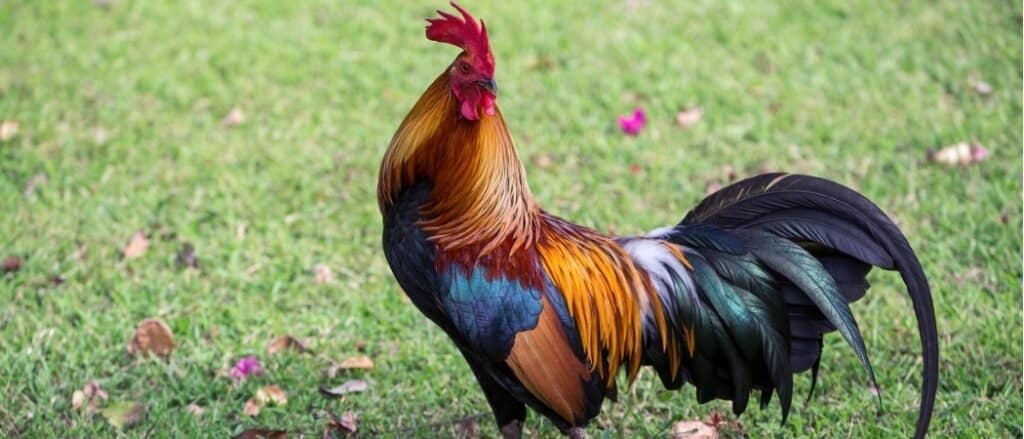
Most chicken don’t make it past 10 years of age
©iStock.com/undefined undefined
Muffy’s 22-year lifespan was the longest ever survived by a chicken so far. However, other chickens lived well beyond the expected 8-year lifespan. Some other chickens that paved the way for record-setting longevity include:
- Matilda lived to be 16 years old and was the first chicken to be recognized as the World’s Oldest Chicken by Guinness World Records
- Bob Ross was a chicken that lived to be 20 years old but never received certification regarding his longevity
- Old Hen is believed to be the longest living chicken as of 2021 and is poised to live up to Muffy’s amazing lifespan or beyond.
Each of these birds received extraordinary care from their owners in terms of protection from predators and consistent food. Furthermore, they benefitted from specific physical traits such as a lack of egg-laying and a smaller size than other birds.
Do Chickens Live Longer Compared to Other Birds?
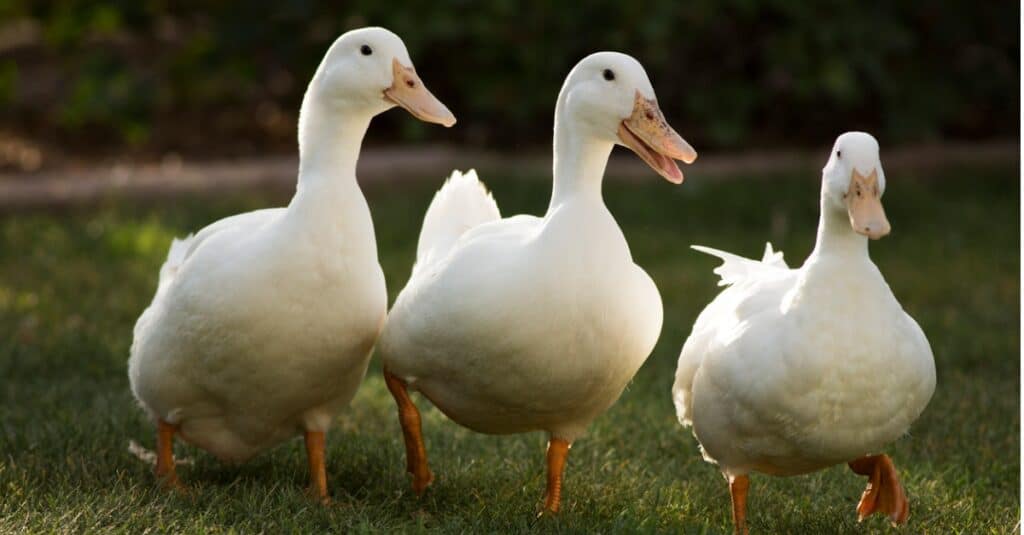
The lifespan of chickens is similar to
ducks
©iStock.com/Maria Jeffs
Chickens are not a particularly long-lived species unless they are placed in great conditions. However, they have a comparable lifespan with many similar birds.
- Ducks tend to live anywhere between 5-10 years in captivity, which is similar to chickens that are not raised specifically for meat and eggs.
- Domestic turkeys can live up to 10 years as well, but they rarely reach that age for the same reasons as chickens
- Wild turkeys survive between 3-5 years, much lower than domestic turkeys. They face additional hardships like disease and predation.
- Canadian Geese can live anywhere between 10-24 years, far longer than most fowls last.
On the whole, chickens are not outliers in terms of their longevity. Chickens receiving unusually good care can live almost as long as the most long-lasting birds, though.
Chickens’ Social Order
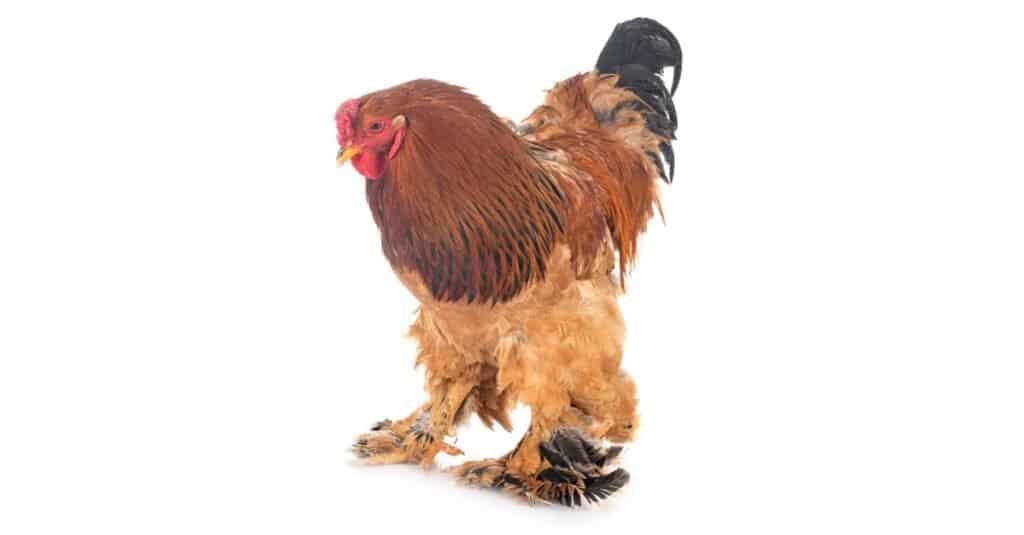
A Brahma chicken
©iStock.com/cynoclub
The term “pecking order” describes the social hierarchy of chickens. When a new chicken is introduced into a domestic living situation with others, it will often be set upon by bigger, stronger birds that put the newcomer in place with pecks.
Sometimes, the newcomer fights back in such a way that it gains status in the pecking order. Over time, the chickens come to understand which bird ranks where in the pecking order, and that reduces the frequency of disputes in the coop.
Chickens are interesting creatures that exist throughout the world today. Although they are the most populous bird on the planet, they are also the most frequently slaughtered for food products.
These fowls can frequently survive for nearly a decade under the right care and conditions, but that is rarely seen. Still, Old Hen just might survive to break the record and become the longest living chicken of all time, claiming the spot from the current record-holder, Muffy.
The photo featured at the top of this post is © iStock.com/IsaacRuiz
Thank you for reading! Have some feedback for us? Contact the AZ Animals editorial team.






